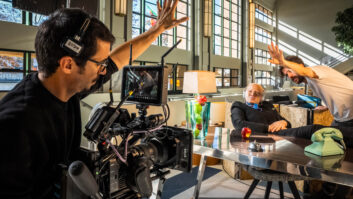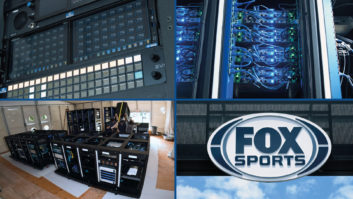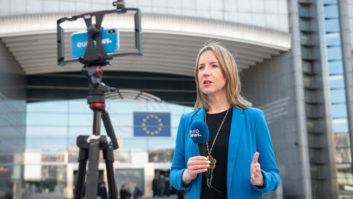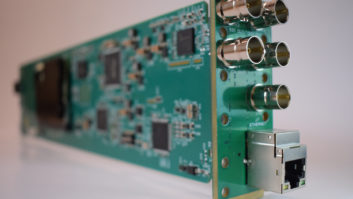
The cloud promises to connect everybody, everywhere, all the time, and some IBC vendors came very close to the dream of universal connectivity.
“It’s closer to being an IT convention than a broadcast convention,” observed one high-profile attendee of this September’s IBC event in Amsterdam. And though 4K was a dominant topic of conversation, much of that conversation was about how to deal with 4K’s huge data files.
This year seemed to be the IBC where the possibilities of a fully connected world became apparent. Attendees began to see practical implications of working in the cloud, and well-developed cloud-based production solutions were shown off by a number of major companies.
In truth, broadcasters have been using cloud workflows for years; a post house with servers linked across its different locations operates, in some small degree, its own internal cloud. But what has changed is the scale – a combination of terrific expansion of storage space, ubiquitous remote connectivity and ever-increasing data transfer speed.
And the cloud is an evolving workspace – we can be certain that next year’s cloud solutions will be faster, cheaper and more easily accessible than this year’s. The question staring broadcasters in the face is: why spend your own resources and real estate on servers and storage, when – for example — Amazon’s AWS cloud service has over half a million servers ready and waiting?
Avid showed off its vision for the future of workflows, Avid Everywhere. Avid Everywhere is an attempt to rethink content production workflow from the ground up, recognising that connectivity allows the sharing of information in endless permutations.
“It’s not a value chain anymore. It’s an ecosystem of networked collaborators,” said an Avid representative, “Just as consumers are no longer constrained by how and when they consume content, media organisations are no longer limited to working within the walls of their facility.” A decade ago, Avid Everywhere would have been a pie in the sky fantasy, but virtual workflows in the cloud, make it not only possible, but in some ways inevitable.
London-based Aframe promoted its own cloud asset management platform and hosted a discussion, moderated by company founder David Peto (pictured), on the current and future uses of cloud production. Peto and his team built the software and system from the ground up, literally starting the company in a one-room flat. As of IBC three million video files, not including metadata, have gone through the Aframe system, with the largest project clocking in at 6400 hours. Its clients include the BBC, Sky, Panasonic and MTV.
Three panellists gave candid accounts of their experience with cloud production, Thomas Viner, executive producer at Arrow Media, Cara Cheeseman, head of advanced production and innovation at Sky, and Bryan Phillips, project manager at the digital production partnership, BBC.
Viner, whose work is mostly in factual production, found that the cloud was useful in post, but location shooting prevented immediate cloud ingest of footage. “Getting to the cloud is the problem. We still send a drive to the post house.” The success of Panasonic’s cloud ENG solution suggests that this kind of problem may be eliminated in the near future.
Cloud production workflows offer the opportunity of bringing all parts of workflow together in a nonlinear, collaborative environment. The technology is available, it works, but the change in mindset required might be the biggest stumbling block to wide adoption.
Arrow’s Thomas Vinter summed up that resistance to change: “‘Workflow solution’. When people hear those words, they think ‘That’s not my job.’”
www.aframe.com







